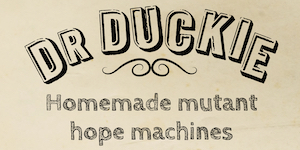As a sidebar to a feature on Ira Sachs’s new film Love Is Strange in this month’s Sight & Sound, I wrote an article about the recent rise in older LGBT characters on screen – an aspect of the ‘backward turn’ in queer cinema I’ve been writing about on and off over the past year. The full article follows by agreement with S&S’s publisher.
Boys on Film – the series of short-film compilation DVDs from the LGBT- specialist distributor Peccadillo Pictures – has now reached its 12th volume. There are no current plans for a companion series of Old Men on Film. This is hardly a surprise: in general, LGBT film culture has been no less enamoured of youth than mainstream cinema. But that has been changing over the past few years. Ira Sachs’s Love Is Strange is only the latest in a new wave of films seriously engaged with the experience of older LGBT people. Several factors might be involved in this shift – demographic change, curiosity about the past, and anticipation of the future.
Cinema is hardly littered with examples of older queer characters and where they have existed, they have generally been ridiculous or pitiable. Even when given centre stage and a degree of sympathy, they have tended to be tragic, and perhaps also absurd or grotesque. Beryl Reid’s George in The Killing of Sister George (1968) has her moments of triumph but still ends up broken, while older male characters often fall prey to Death in Venice syndrome, mooning more or less sympathetically and fatally after unattainable objects of desire: as well as Visconti’s 1971 film itself, see Love and Death on Long Island (1997), Gods and Monsters (1998), Capote (2005) and arguably A Single Man (2009). There have been exceptions: Terence Stamp’s transgender character Bernadette in The Adventures of Priscilla, Queen of the Desert (1994) is strikingly self-determined in life and romance; and Christopher Plummer’s Hal in Beginners (2010) takes to his late-blossoming gay life with good-natured aplomb.
The past couple of years, however, have seen a notable increase in films that pay attention to the experience of older LGBT people on their own terms. The trailblazer was Sébastien Lifshitz’s Les Invisibles (2012), a documentary portrait of ten French people that was one of the first films to take seriously – or even to acknowledge – the richness and complexity of older queer lives. Many of Lifshitz’s subjects had been activists at the time of gay liberation – a period during which socialising and indeed sex between LGBT people of different ages was more common than today. For younger queer audiences, unused to spending time with those outside their own age group, the film was not just a vivid testament to the vibrant subjectivity of those on screen but a reminder that they existed at all.
Subsequent titles have included P.J. Raval’s Before You Know It (2013), an American documentary about three gay senior citizens; Before the Last Curtain Falls (Bevor der letzte Vorhang fällt, 2014), about a group of older LGBT cabaret artists; and Stefan Haupt’s The Circle (Der Kreis, 2014), in which a dramatised version of a real-life story about a gay-rights group in 1950s Zurich is interspersed with material about the subjects’ lives today.
These titles emerged alongside the trend for mainstream features catering to grey audiences – pictures about and for an ageing demographic such as My Old Lady (2014), Quartet (2012) or The Best Exotic Marigold Hotel (2011). Regardless of sexuality, all of these titles share an interest in exploring and reflecting back the experience of the baby-boomer generation as it enters its twilight years with its spending power relatively intact. But when it comes to the LGBT titles, something more seems to be going on. They are not particularly targeted at viewers of an age with their subjects, and they invite a kind of double perspective, particularly for younger audiences: in the absence of first-hand contact between generations, they affirm the reality of the queer past as lived experience; at the same time, they offer a vision of a lived future to a gay culture whose dominant media often seem to suggest that life ends at 40 (if not 35).
When it comes to fiction, there’s still more afoot. Where Love Is Strange takes us inside an embattled yet resilient same-sex relationship of many decades’ standing, Gerontophilia – arch-provocateur Bruce La Bruce’s 2013 lovers- on-the-lam escapade – centres on the bond between a beautiful boy (Pier-Gabriel Lajoie) and an elderly care-home resident (Walter Borden). These two kinds of relationship are very different but neither has previously been depicted on screen often, if at all.
Perhaps the real power of this new wave has less to do with the past than the future. It could be seen as part of a ‘backward turn’ in LGBT film culture, alongside other new waves of stories with period settings, documentaries about historic subjects, and archival rediscoveries. At a time when the battle for legal equality in Europe and North America seems to have been won, this looking back is surely partly about taking stock of how far we have come. But it’s also about exploring how many ways there are to live a queer life, and starting to imagine how a queer future might look.
More on this subject:
Guardian article about the backward turn in queer cinema
Guardian article on the appeal of period settings for queer cinema
Interview with Ernst and Röbi, whose lives were the basis of 1950s-set drama The Circle


